Once Diwali is over, is it ‘Lights out!’ for the lamps that gleefully decorate our homes and outdoors during the festival?
“Certainly not!” All it takes is a little bit of effort to kindle another flame of life into these lamps. Possibly, a small change in mindset too.
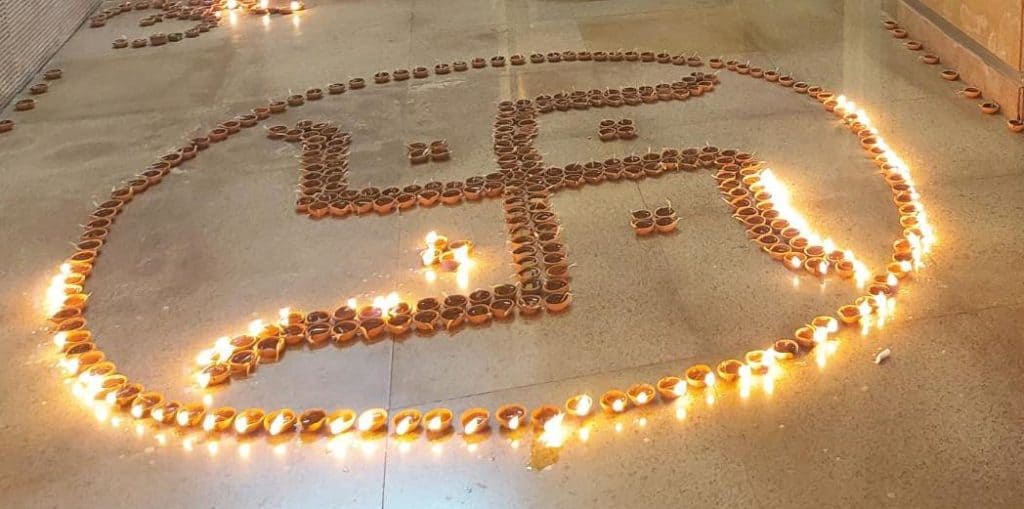
Diwali, or Deepavali (row of lights), is synchronous with lights. It is one of the few festivals celebrated around Amavasya (new moon), when we don’t have the light of the moon at night. This is possibly the significance of lighting lamps to keep away evil forces that wait for darkness.
Different forms of light usher in Diwali these days – the traditional oil and ghee lamps, and the more modern electric bulbs, dainty looking twinkling electric LED lights, tea candles and glitzy wax lamps.
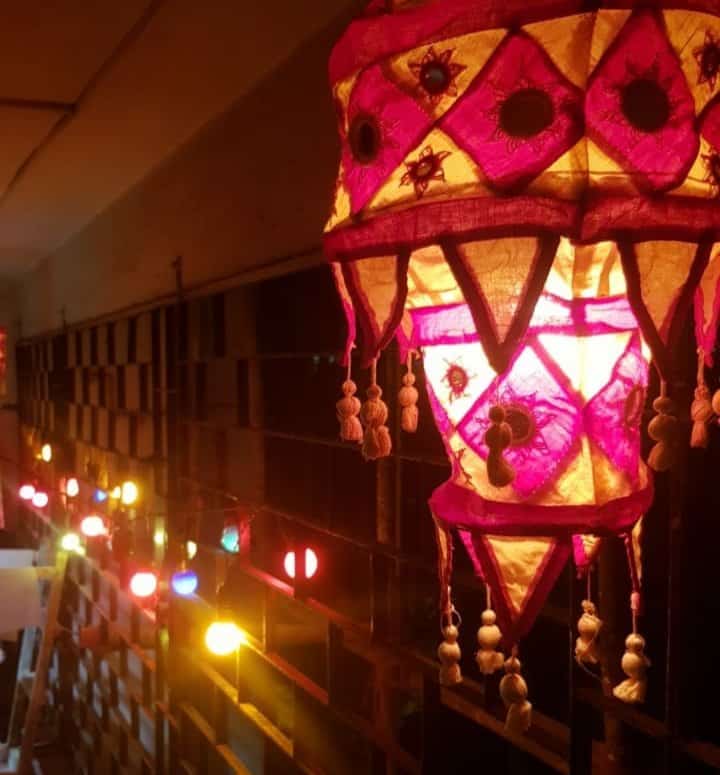

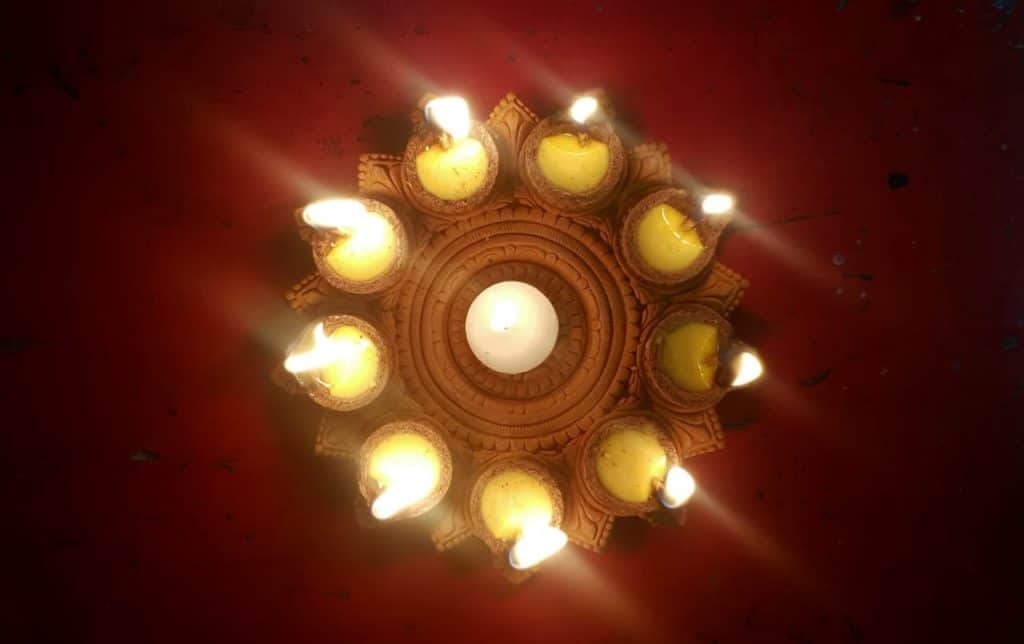
The traditional oil lamps made of clay have taken a back seat in many households. Endearing as they may be, with hours of running time, their steady glow is being sidelined for the new glitzy wax lamps that are less messy to handle and easy to light, but they’re one-time use.
All things said, the clay lamp, mitti-ka-diya as we call it, has a quality that’s much cherished – it’s ability to be reused! However, we see that many people don’t want to handle their used diyas. They throw them away after Diwali, ready to buy new ones the following year. Why throw? Oh why? Use them for the full Diwali period, and please don’t discard them. One of our neighbourhood seniors, Girija Kadam recalls her childhood and says, “In those days, people didn’t have much money. We used to paint the diyas and reuse them year after year. These days people have become wasteful.”

So how do we reuse our diyas?
In our home, every year after the festivities, we wash all the diyas with soap and water. It doesn’t take much effort to get the oil off. Then we allow them to dry thoroughly.
Once they are fully dry, we apply geru which is a red clay paint. The diyas can be left to look natural like this. You can skip the geru if you want colourful diyas, but it does give a base for the other paint.
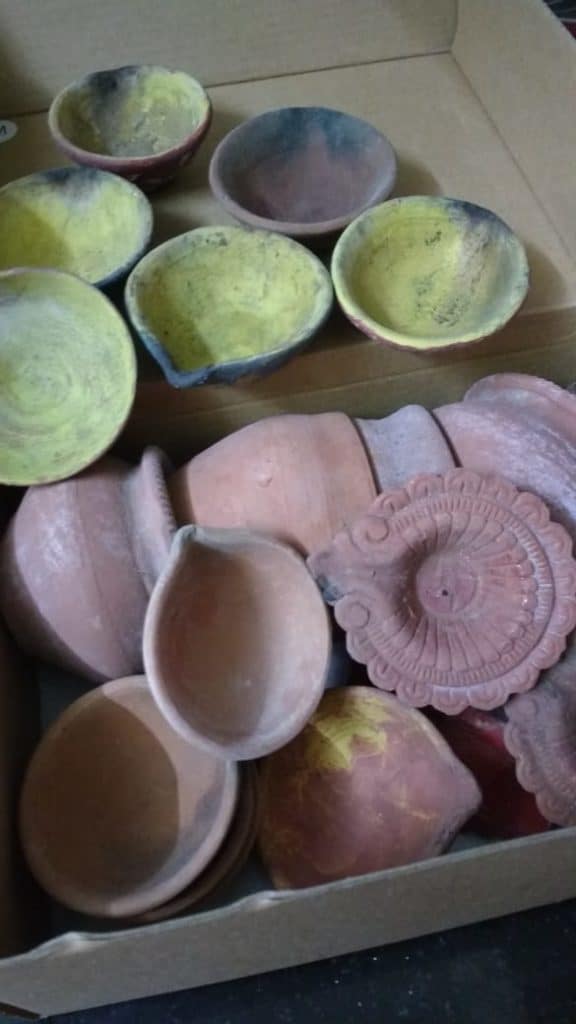
Now it’s all left to you. Take a palette of colours in one hand, painting brush in the other and just let your creative juices flow. One can give the diyas a coat or two of plain paint, draw motifs, streak, spray, drizzle, glitter or embellish them with trinkets, beads, sequins or stones. The list of ideas to decorate them is endless.
Voila! we have refurbished diyas in sparkling new attire.
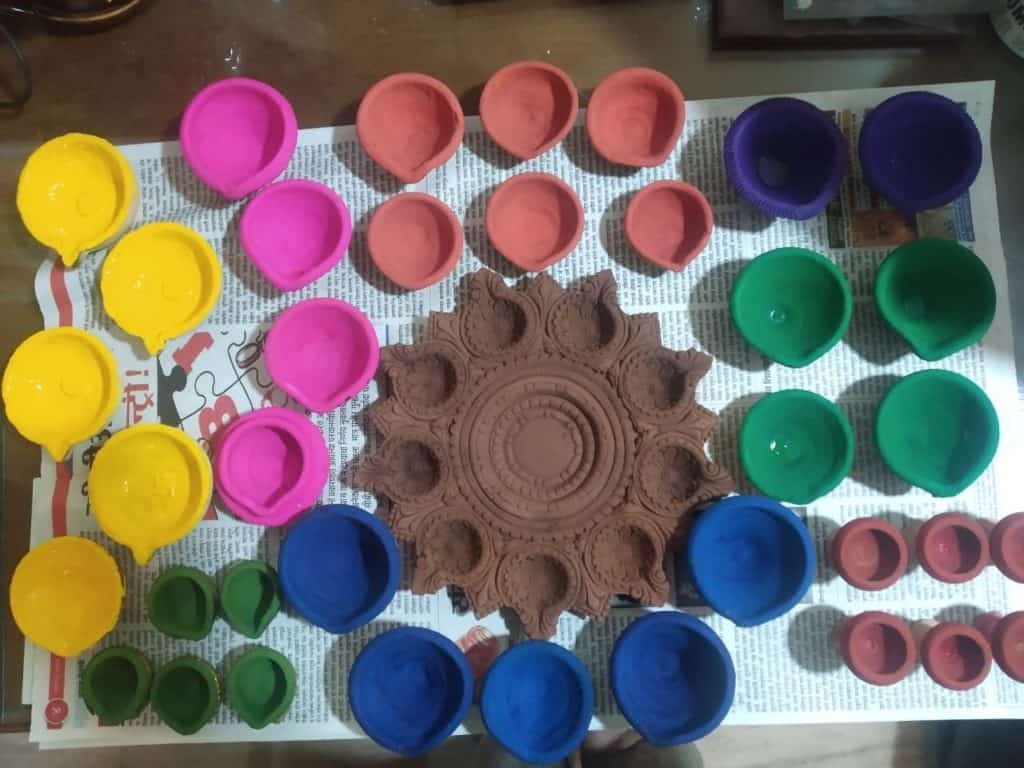
At the end of it bask in the glow of satisfaction and stare at your creation. As long as there are ideas and a will to recreate, the diyas can be used season after season.
For those worried that the potters may be put out of business, it isn’t the case. There is a growing market for everything, diyas included. But yes, our acts of reuse creates less waste and is less detrimental to the environment.
Written with inputs from my wife Dr Jayashree Gupte.
Also read:
Well done…proud of you….keep it up!!!
Thank you
Just wonderful !
Thank you
Great दर्शन!
Thank you
Is there any eco friendly way to dispose the diyas? If you can help then we can all follow (friends , family and readers too ). or if you know any collection center.